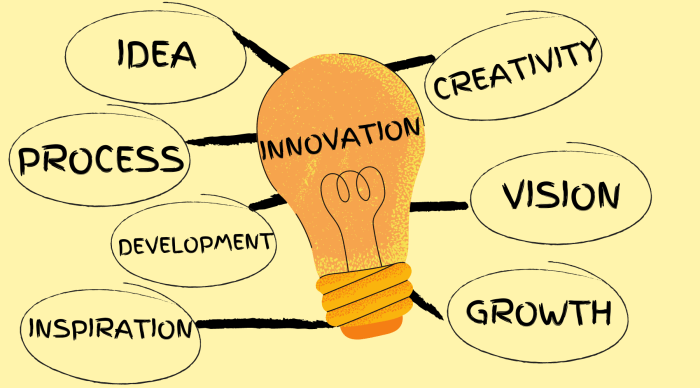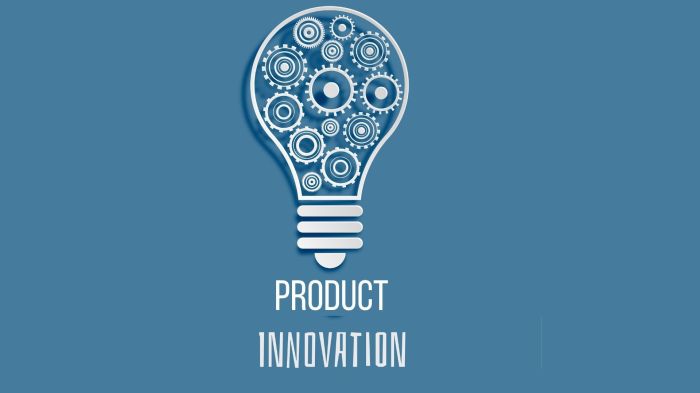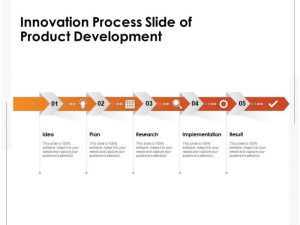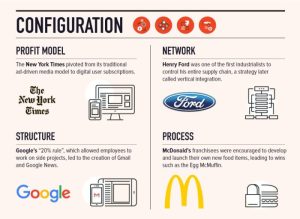
Product innovation is the lifeblood of any successful business. It’s not merely about creating something new; it’s about understanding evolving customer needs, leveraging technological advancements, and strategically launching products that resonate in the marketplace. This guide delves into a structured approach to product innovation, encompassing everything from initial ideation to a triumphant market launch. We’ll explore proven methods for identifying opportunities, developing compelling concepts, and navigating the crucial testing and refinement phases.
Ultimately, we aim to equip you with the tools and knowledge to foster a culture of innovation within your organization.
We will cover a comprehensive framework, examining successful case studies and highlighting common pitfalls to avoid. This practical guide emphasizes the synergistic relationship between innovation and launch strategies, emphasizing the importance of aligning product development with marketing and sales efforts for optimal results. By understanding and implementing these principles, businesses can significantly increase their chances of creating and launching truly groundbreaking products.
Developing Innovative Product Ideas
Developing a truly innovative product requires a structured approach that moves beyond brainstorming and delves into the practical aspects of creation. This process involves careful consideration of the market, thorough analysis of user needs, and iterative refinement of the product concept until it becomes a viable offering. This section details the steps involved in transforming a raw idea into a marketable product.
Transforming an Initial Idea into a Viable Product Concept
The journey from a nascent idea to a viable product concept is iterative and requires a systematic approach. It begins with clearly defining the problem the product aims to solve and identifying the target audience. Market research is crucial at this stage to understand existing solutions, competitive landscapes, and potential customer needs. Following this, the core features and functionalities of the product are defined, focusing on the key value proposition it offers.
This is followed by a feasibility study, evaluating the technical, economic, and logistical aspects of bringing the product to market. This process involves continuous refinement, feedback incorporation, and adaptation based on the gathered information and market analysis. Finally, a detailed product specification document is created, outlining the product’s features, functionality, and design specifications.
Hypothetical Innovative Product: The “SmartGro” Home Gardening System
The SmartGro system is a self-contained, automated home gardening system designed for urban dwellers with limited space and gardening experience. Its target market is young professionals and families living in apartments or small houses who desire fresh, organic produce but lack the time or space for traditional gardening. The value proposition lies in its convenience, ease of use, and ability to produce high-quality produce year-round, regardless of external environmental factors.
Key features include automated watering and nutrient delivery, integrated LED grow lights optimized for different plant types, a mobile app for monitoring and controlling the system, and a modular design allowing for customization based on available space and desired crops.
Prototyping a New Product Feature: SmartGro App’s Plant Health Monitoring
The SmartGro app’s plant health monitoring feature utilizes image recognition and machine learning to assess the health of plants. The design process involved several steps: 1) Defining the feature’s functionality: Automatic image capture, analysis, and reporting of plant health indicators (leaf color, wilting, pest infestation). 2) Selecting the technology stack: Cloud-based image processing services, machine learning algorithms, and a user-friendly mobile interface.
3) Creating a low-fidelity prototype: Using wireframes and mockups to visualize the app’s interface and user flow. 4) Developing a high-fidelity prototype: Building a functional prototype incorporating the core functionality. 5) User testing: Gathering feedback from potential users to identify areas for improvement. 6) Iteration and refinement: Making changes based on user feedback and further testing.
Prototyping Methods
Different prototyping methods offer various advantages and disadvantages depending on the project’s stage and resources.
| Method | Description | Advantages | Disadvantages |
|---|---|---|---|
| Paper Prototyping | Using paper and pen to create a basic representation of the product’s interface or functionality. | Fast, inexpensive, and allows for quick iteration. | Limited interactivity and fidelity. |
| Digital Prototyping | Creating an interactive prototype using software tools like Figma or Adobe XD. | Higher fidelity and interactivity than paper prototyping. | Requires more time and resources. |
| Functional Prototype | A working model of the product that demonstrates its core functionality. | Allows for thorough testing and validation of the product’s functionality. | Can be time-consuming and expensive to develop. |
| Minimum Viable Product (MVP) | A basic version of the product with enough features to attract early adopters and gather feedback. | Allows for early market validation and feedback gathering. | May lack some features and polish. |
Testing and Refining Product Innovations
Developing a truly innovative product requires more than just a brilliant idea; it necessitates rigorous testing and refinement to ensure it meets user needs and expectations. This crucial phase validates initial concepts, identifies areas for improvement, and ultimately shapes the final product’s success. Without thorough testing, even the most promising innovations can fall flat.
User testing plays a pivotal role in validating product concepts and ensuring market viability. It provides invaluable insights into how real users interact with the product, revealing usability issues, unmet needs, and areas where the design or functionality can be improved. This feedback is essential for making informed decisions throughout the development process, minimizing risks, and maximizing the chances of a successful launch.
Methods for Gathering User Feedback
Gathering comprehensive user feedback involves employing a variety of methods to capture a holistic view of user experience. Different methods offer unique advantages, and a multi-faceted approach often yields the richest insights.
Several techniques are effective in gathering user feedback. These include:
- Usability testing: Observing users as they interact with a prototype or beta version of the product to identify pain points and areas for improvement in the user interface and overall functionality.
- Surveys: Distributing questionnaires to a wider audience to gather quantitative and qualitative data on user preferences, satisfaction, and feature importance.
- Interviews: Conducting one-on-one conversations with users to delve deeper into their experiences and understand their motivations and challenges.
- Focus groups: Facilitating discussions among small groups of users to explore their perspectives and generate ideas for improvement in a collaborative setting.
- A/B testing: Comparing two versions of a product feature or design element to determine which performs better in terms of user engagement and conversion rates.
Analyzing User Feedback Data
The data collected through various user feedback methods needs careful analysis to identify actionable insights. This involves organizing, interpreting, and synthesizing the information to pinpoint areas needing improvement.
Effective analysis involves:
- Qualitative data analysis: Identifying recurring themes, patterns, and sentiments expressed in user feedback through interviews, focus groups, and open-ended survey questions.
- Quantitative data analysis: Analyzing numerical data from surveys and A/B tests to identify statistically significant differences in user behavior and preferences.
- Prioritization: Ranking identified issues based on their severity, impact on user experience, and feasibility of implementation.
- Visualizations: Using charts, graphs, and other visual aids to represent the data and make it easier to understand and communicate key findings.
Examples of Successful Product Iterations
Many successful products owe their success to iterative development driven by user feedback. Analyzing user feedback and incorporating it into the design process is crucial for product success.
Examples of successful product iterations based on user feedback include:
- The evolution of the iPhone: Early versions of the iPhone had limitations in terms of app functionality and multitasking capabilities. Apple continuously incorporated user feedback to improve these aspects, resulting in the highly functional and user-friendly device we know today. Initial feedback highlighted the need for more robust multitasking and app capabilities, leading to significant updates in subsequent iterations.
- Netflix’s recommendation system: Netflix’s recommendation engine has undergone numerous iterations based on user viewing habits and feedback. By analyzing user data, Netflix continuously improves the accuracy and personalization of its recommendations, leading to increased user engagement and satisfaction. Early versions of the recommendation system were less sophisticated, resulting in less relevant suggestions. User feedback and data analysis led to significant improvements in algorithm accuracy.
Product Innovation and Launch Strategies

Successfully launching an innovative product requires a well-defined strategy that considers market dynamics, target audience, and effective communication. A poorly executed launch can significantly hinder even the most groundbreaking product, while a strategic approach can propel it to market dominance. This section explores various launch strategies and their application, the critical role of marketing and communication, and examines different pricing and distribution models.Product Launch Strategies and Their EffectivenessDifferent market contexts necessitate diverse launch strategies.
A “big bang” launch, characterized by a significant marketing push and widespread product availability, is effective for products with high demand and broad appeal, like the initial launch of the iPhone. Conversely, a phased rollout, where the product is launched in specific geographic regions or market segments before broader release, allows for controlled market entry and iterative improvements based on initial feedback.
This approach proved successful for Tesla, who gradually expanded their market reach after initial success in specific regions. A stealth launch, where the product is quietly introduced without extensive marketing, might be appropriate for niche products or those requiring a low-profile market entry. The selection of the optimal strategy hinges on factors such as market size, competitive landscape, product complexity, and resource availability.
Marketing and Communication in Product Launches
Marketing and communication are pivotal in shaping the perception of a new product and driving adoption. A comprehensive marketing plan should define the target audience, craft compelling messaging that resonates with their needs and desires, and strategically select communication channels. This could involve digital marketing (social media campaigns, targeted ads), traditional media (print, television), public relations (press releases, influencer marketing), and experiential marketing (events, demonstrations).
For instance, a new sustainable fashion brand might leverage influencer marketing on Instagram and TikTok to reach environmentally conscious consumers, while a high-tech gadget could rely on targeted advertising on tech-focused websites and podcasts. The choice of channels should align with the target audience’s media consumption habits.
Marketing Plan for a Hypothetical Innovative Product
Let’s consider a hypothetical product: “AquaPure,” a self-cleaning water bottle using UV-C light to eliminate bacteria and viruses.Target Audience: Environmentally conscious individuals, fitness enthusiasts, and travelers who prioritize health and convenience.Messaging: Focus on the health benefits (elimination of harmful bacteria), convenience (self-cleaning function), and sustainability (reduced plastic waste). Highlight the product’s unique selling proposition – the UV-C self-cleaning technology.Channels: Social media marketing (Instagram, Facebook, TikTok) featuring lifestyle-oriented content, influencer collaborations, targeted online advertising on health and fitness websites, and partnerships with eco-conscious retailers.
Pricing and Distribution Strategies
Different pricing and distribution strategies offer varying advantages and disadvantages. The optimal choice depends on factors such as product cost, target market, competitive landscape, and overall business objectives.
| Strategy | Description | Advantages | Disadvantages |
|---|---|---|---|
| Premium Pricing | Setting a high price to signal high quality and exclusivity. | Higher profit margins, strong brand image. | Limited market reach, potential for price sensitivity. |
| Penetration Pricing | Setting a low price to quickly gain market share. | Rapid market penetration, high volume sales. | Lower profit margins, potential for price wars. |
| Direct Distribution | Selling directly to consumers through the company’s own channels (website, stores). | Greater control over branding and pricing, direct customer interaction. | Higher initial investment in infrastructure and logistics. |
| Indirect Distribution | Selling through intermediaries (retailers, wholesalers). | Wider market reach, lower distribution costs. | Less control over branding and pricing, reliance on intermediaries. |
Case Studies in Product Innovation

Successful product launches are rarely accidental; they are the result of meticulous planning, insightful market research, and a deep understanding of consumer needs. Examining both triumphs and failures provides invaluable lessons for future innovation efforts. This section will analyze several case studies, highlighting key success factors, common pitfalls, and strategies for avoiding those pitfalls.
Successful Product Launches: Key Factors
Three exemplary product launches illustrate the crucial elements contributing to their success. These examples showcase the power of addressing unmet needs, leveraging effective marketing, and adapting to changing market dynamics.
- The iPod: Apple’s iPod revolutionized the music industry by offering a portable, user-friendly device for digital music consumption. Its success stemmed from a combination of factors: intuitive design, seamless integration with iTunes, a strong brand reputation, and a compelling marketing campaign that emphasized the ease and pleasure of listening to music on the go. The iPod’s success wasn’t just about technology; it was about creating a complete user experience.
- The iPhone: Building on the iPod’s success, the iPhone combined a mobile phone, internet browser, and media player into a single, elegant device. Its success was driven by a focus on user experience, innovative app development, and a carefully curated ecosystem of services. The iPhone also benefited from Apple’s strong brand loyalty and a highly effective marketing strategy that consistently emphasized innovation and user-friendliness.
- Airbnb: Airbnb disrupted the hospitality industry by providing an alternative to traditional hotels. Its success is attributable to its peer-to-peer model, which taps into a vast network of hosts and guests, a user-friendly platform, and a robust trust and safety system. Effective marketing and a strong focus on building community also contributed significantly to Airbnb’s rapid growth.
Product Innovation Pitfalls and Avoidance Strategies
Numerous challenges can derail even the most promising product innovations. Understanding these common pitfalls and implementing preventative strategies is crucial for success.
- Ignoring Market Research: Failing to thoroughly understand customer needs and market trends can lead to products that fail to resonate with the target audience. Strategy: Conduct extensive market research, including surveys, focus groups, and competitive analysis, before investing heavily in product development.
- Poor Product Design: A poorly designed product, regardless of its innovative features, will likely fail to gain traction. Strategy: Invest in user-centered design, incorporating feedback from potential users throughout the development process.
- Inadequate Marketing and Launch Strategy: Even a great product can fail without a compelling marketing campaign and a well-executed launch strategy. Strategy: Develop a comprehensive marketing plan that clearly articulates the product’s value proposition and targets the right audience.
- Insufficient Testing and Refinement: Launching a product without sufficient testing and refinement can lead to significant problems and negative customer feedback. Strategy: Conduct rigorous testing and iterative refinement throughout the development process, incorporating feedback from beta testers and early adopters.
Failed Product Innovations: Analysis of Causes
Analyzing the failures of innovative products provides equally valuable insights.
- Google Glass: While technologically advanced, Google Glass failed to gain widespread adoption due to high price, privacy concerns, and a lack of compelling use cases for everyday consumers. The product was ahead of its time and lacked a clear market fit.
- Juicero: This high-priced, Wi-Fi-connected juicer failed due to its exorbitant price point, limited functionality (hand-squeezing the juice packs was cheaper), and the perception of being a luxury item with little practical value.
- Zune: Microsoft’s attempt to compete with the iPod ultimately failed due to a less intuitive user interface, a smaller music library, and a lack of strong brand recognition in the portable music player market. The late market entry and inability to differentiate significantly from the already established competitor significantly hampered its success.
Successful Product Launch Campaign: A Detailed Description
Let’s consider a hypothetical launch campaign for a new sustainable clothing line, “EcoThreads.”This campaign would focus on highlighting the brand’s commitment to ethical and environmentally friendly practices. Marketing materials would include high-quality photography and videography showcasing the clothing’s stylish designs and sustainable materials. Social media campaigns would engage influencers and customers, emphasizing the brand’s values and unique selling points.
A launch event would be held in a location that reflects the brand’s eco-conscious ethos, perhaps a botanical garden or community farm. Public relations efforts would focus on securing media coverage in relevant publications and websites. Partnerships with environmental organizations would add credibility and enhance brand image. The campaign’s messaging would emphasize not just the product’s sustainability, but also its quality, style, and affordability.
The campaign would emphasize customer engagement, fostering a community around the brand’s values.
Product Innovation and Product Launch
A successful product launch isn’t merely the culmination of the product development process; it’s an integral and synergistic part of the innovation journey itself. A brilliant product idea, meticulously crafted, can still fail spectacularly without a well-executed launch strategy. The two are inextricably linked, each dependent on the other for ultimate success. A strong innovation strategy inherently incorporates launch considerations from the outset, ensuring a smoother transition from development to market.The connection between a robust innovation strategy and a successful product launch is multifaceted.
A well-defined innovation strategy clarifies the target market, articulates the value proposition, and establishes key performance indicators (KPIs) early on. This clarity informs every aspect of the launch, from marketing messaging to sales channel selection. Furthermore, a proactive approach to identifying and mitigating potential risks during development directly translates to a more efficient and less stressful launch phase.
By anticipating challenges and developing contingency plans, companies can avoid costly delays and reputational damage.
The Alignment of Product Development, Marketing, and Sales
Aligning product development with marketing and sales efforts is paramount for optimal launch results. This requires cross-functional collaboration throughout the entire product lifecycle. Marketing needs detailed product specifications and timelines to develop effective messaging and campaigns. Sales teams require comprehensive training materials and sales tools to effectively articulate the product’s value to potential customers. For instance, a software company launching a new customer relationship management (CRM) system would need its sales team trained on the system’s functionalities and benefits well in advance of the launch date.
Simultaneously, the marketing team needs to create compelling content that showcases the CRM’s capabilities and addresses customer pain points. This integrated approach ensures a cohesive and impactful launch.
Integrating Customer Feedback into the Product Launch Process
Integrating customer feedback into the product launch process is crucial for maximizing impact and minimizing potential setbacks. Gathering feedback throughout the development process, from initial concept testing to beta testing, provides invaluable insights into customer preferences and expectations. This feedback can then be used to refine the product, tailor marketing messages, and optimize the launch strategy. For example, a company launching a new line of athletic shoes might conduct focus groups to assess consumer preferences regarding design, features, and price points.
This feedback can be incorporated into the final product design and marketing materials, resulting in a more successful launch. Moreover, actively soliciting and responding to customer feedback post-launch can build brand loyalty and identify areas for future product improvement. This continuous feedback loop is essential for long-term product success.
Successfully innovating products requires a blend of creativity, strategic planning, and a deep understanding of the market. From identifying unmet needs to meticulously testing and refining prototypes, each stage plays a crucial role in the journey from concept to launch. By embracing a data-driven approach, incorporating user feedback, and strategically aligning product development with marketing and sales, businesses can significantly enhance their probability of success.
This guide provides a roadmap for navigating this process, empowering you to create and launch innovative products that not only meet but exceed customer expectations and drive substantial growth.
Commonly Asked Questions
What is the difference between invention and innovation?
Invention is the creation of something new, while innovation is the successful implementation and commercialization of that invention.
How can I measure the success of my product innovation?
Success can be measured through various metrics, including sales figures, customer satisfaction, market share, and return on investment (ROI).
What if my innovative product fails?
Failure is a learning opportunity. Analyze the reasons for failure, gather feedback, and iterate on your product or strategy.
How important is team collaboration in product innovation?
Collaboration is crucial. Diverse perspectives and expertise are essential for generating creative ideas and solving complex problems.
How can I protect my innovative product ideas?
Consider intellectual property protection options such as patents, trademarks, and copyrights.






